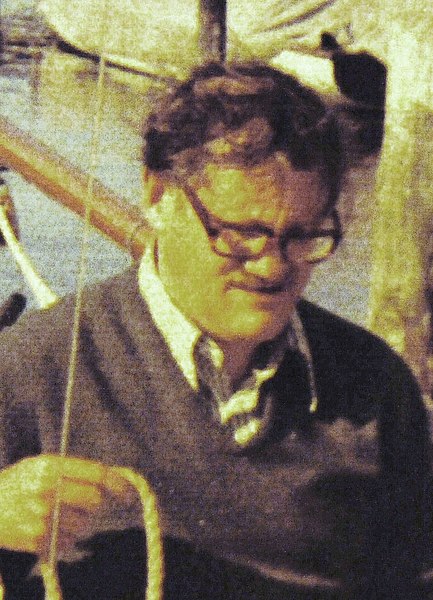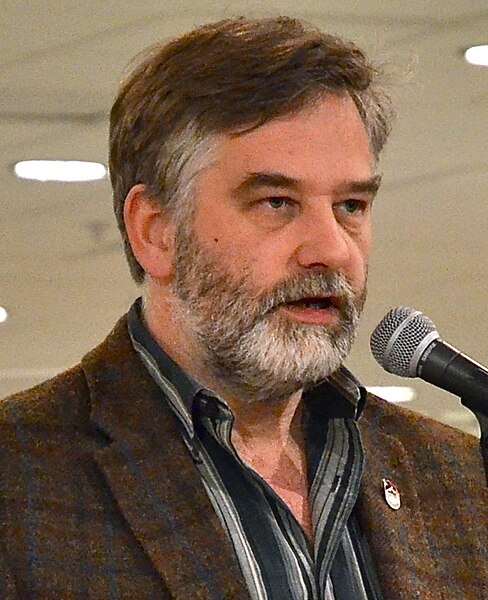Translation of The Lord of the Rings into Swedish
The translation of The Lord of the Rings into Swedish has been the subject of controversy. The first version, by Åke Ohlmarks, was made in 1959–1961; it was the only one available in Swedish for forty years. Tolkien took issue with Ohlmarks' translation, identifying numerous errors and inconsistencies. In 1967, in response to Ohlmarks' Swedish and Max Schuchart's Dutch translations, Tolkien produced his "Guide to the Names in The Lord of the Rings"; it discusses how to translate The Lord of the Rings' personal names and place-names, giving multiple examples from Ohlmarks' Swedish of what not to do when translating. Ohlmarks rejected all criticism, stating that he had intentionally created an interpretation of Tolkien, not a straight translation. Swedish commentators took a wider range of positions on Ohlmarks' version: some admired it, while others thought it defective.
Åke Ohlmarks in 1938
Erik Andersson in 2012
Translating The Lord of the Rings
J. R. R. Tolkien's The Lord of the Rings has been translated, with varying degrees of success, into dozens of languages from the original English. Tolkien, an expert in Germanic philology, scrutinized those that were under preparation during his lifetime, and made comments on early translations that reflect both the translation process and his work. To aid translators, and because he was unhappy with the work of early translators such as Åke Ohlmarks with his Swedish version, Tolkien wrote his Guide to the Names in The Lord of the Rings in 1967; this was released publicly in 1975 in A Tolkien Compass, and again, retranscribed, in the 2005 book The Lord of the Rings: A Reader's Companion. The complexity of the book, the nature of Tolkien's prose style, and the many names of characters and places combine to make translation into any language a challenge. Linguists have examined translations into several languages, noting the specific difficulties in each case, and the choices and errors that translators have made.

Max Schuchart in 1968
Åke Ohlmarks
Francis Ledoux's translation "diminishes the peculiarities" of Gollum's distinctive style of speech. Painting of Gollum by Frederic Bennet, 2014
Muravyov and Kistyakovsky's Russian translation used the "loaded words" Generalissimo and Boss that sharply identified Stalin as the evil leader who had taken over the Shire. 1946 poster of Stalin by Nikolai Avvakumov (1908), with the caption "Long live our teacher, our father, our leader, Comrade Stalin!"





